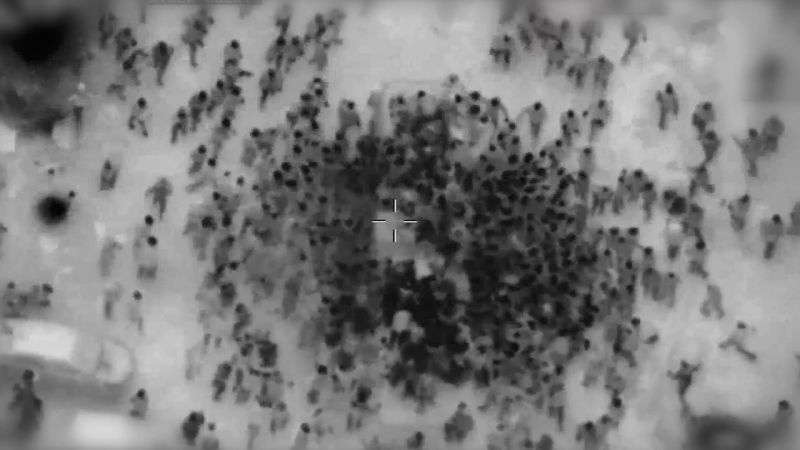Body of the Article:
On a typical day, Gaza’s food aid site is a haven of humanitarian work, where, despite the political unrest and economic hardships, aid workers strive to wield a lifeline of sustenance to Gaza’s impoverished citizens. However, a recent harrowing incident has turned this haven into a cacophony of chaos, as Israeli gunfire reportedly erupted in the vicinity of the aid station, resulting in a gruesome scene of carnage.
The underlying situation, as we understand, is riddled with complex and heart-wrenching realities. The food aid site in question is one of many managed by global aid organizations, serving as a critical lifeline to the Gazan populace which is severely affected by rising poverty rates, worsened by the unabated political unrest. The site services many refugees and citizens with food supplies often being their only means of survival.
Reports began to emerge late last week. Witnesses recounted the terrifying incident where apparently unprovoked gunfire broke out while families gathered to collect essential supplies for their survival. The sounds of gunshots sent people into a frenzy, inducing a stampede as parents screamed for their children, elders stumbled, and infants wailed. The chilling fear intensified with the rising number of victims caught in the gunfire, their blood staining the very ground intended to serve as a resource of life-sustaining aid.
Israeli officials, in response to the subsequent worldwide outcry, have stated that their operations targeted militant groups they allege were situated near the food aid distribution site. These statements, however, have been met with skepticism due to an absence of tangible evidence. The international community is urging for a thorough and impartial investigation into the incident, especially given its troubling location and timing.
The ramifications of the massacre are not just physical but have pierced the psychological fabric of Gaza’s population. Even in an area as tumultuous as Gaza, the food aid site was seen as a sanctuary, an area where basic human need fulfilled a common unassuming purpose of sustaining life. The brutal carnage has ravaged the humanitarian landscape, turning it into a battlefield, warping the perception of a safe space into one of terror, making survival even more challenging.
Reports from local hospitals indicate that most victims were women, children, and the elderly – the most vulnerable of civilians who heavily rely on the food aid. The tragedy has incited international condemnation, with calls for an immediate cessation of violence and protection of non-combatants. Human rights groups have raised questions about the respect for the principles of distinction and proportionality in this attack, as outlined by International Humanitarian Law.
The incident also surfaces larger questions about the extensive humanitarian crisis in Gaza. The blockade on the region by Israel and Egypt due to security concerns, has gravely impaired the living conditions of its 2 million residents, making them dependent on international aid for survival. This event emphasizes the dire need for a level-headed resolution to the incessant political clashes which factor heavily into such calamitous incidents.
In the tumultuous wake of this catastrophe, it is essential to remember that even amidst warfare, certain sanctities must be preserved. Food aid sites are a beacon of hope for many – a strip of land to hold onto amidst the storm of despair. The heart-wrenching incident serves as a grim reminder that warfare should never impede the provision of essential humanitarian aid, as it contravenes every recognized principle of coexistence and human dignity.
While we gather and process further information about this grisly happening, it provides a reflexive juncture to reevaluate our collective global approaches to ongoing conflict zones. It underlines the urgency of support to provide true succor, safety for innocent lives, and hope for a sustainable resolution.




